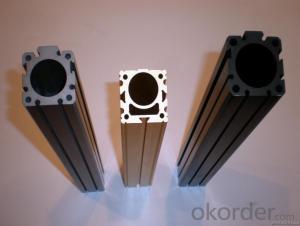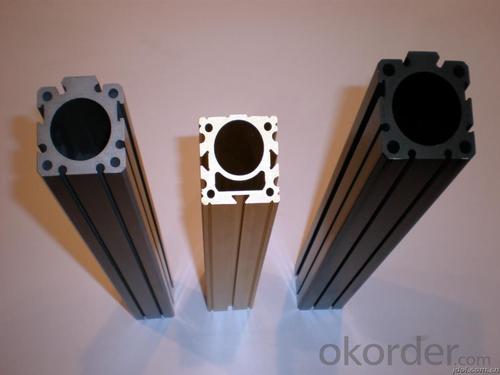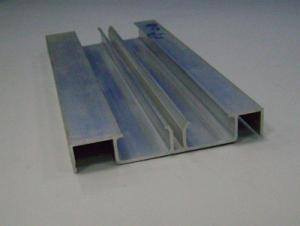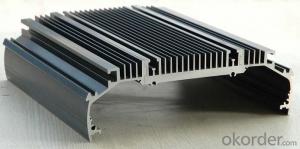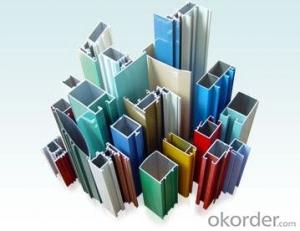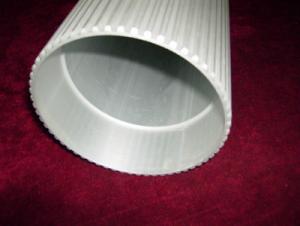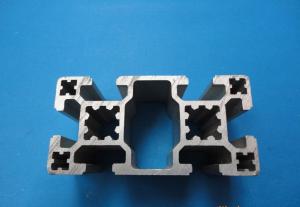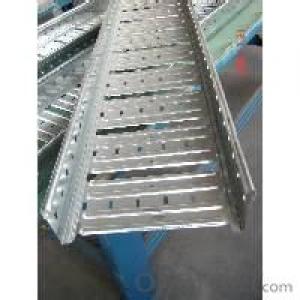Recycled Aluminum Sheets - Aluminium Profiles Aluminum Extrusion Profile
- Loading Port:
- Shanghai
- Payment Terms:
- TT OR LC
- Min Order Qty:
- 20 m.t.
- Supply Capability:
- 2000 m.t./month
OKorder Service Pledge
OKorder Financial Service
You Might Also Like
1.Structure of Aluminium Profiles Aluminum Extrusion Profile Description:
Aluminium Profiles Aluminum Extrusion Profile (also spelled anodising, particularly in the UK and Australia) is an electrolytic passivation process used to increase the thickness of the natural oxide layer on the surface of metal parts. Anodized aluminium surfaces, for example, are harder than aluminium but have low to moderate wear resistance that can be improved with increasing thickness or by applying suitable sealing substances.
2.Main Features of the Aluminium Profiles Aluminum Extrusion Profile:
High corrosion-resistance;
weather-resistance;
heat-resistance;
alkali-resistance and impact-resistance properties.
3.Aluminium Profiles Aluminum Extrusion Profile Images:
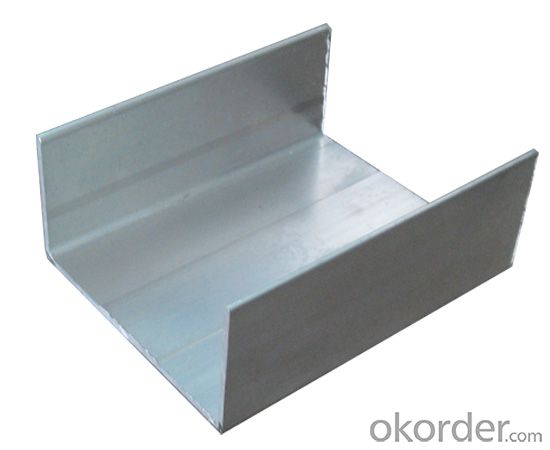
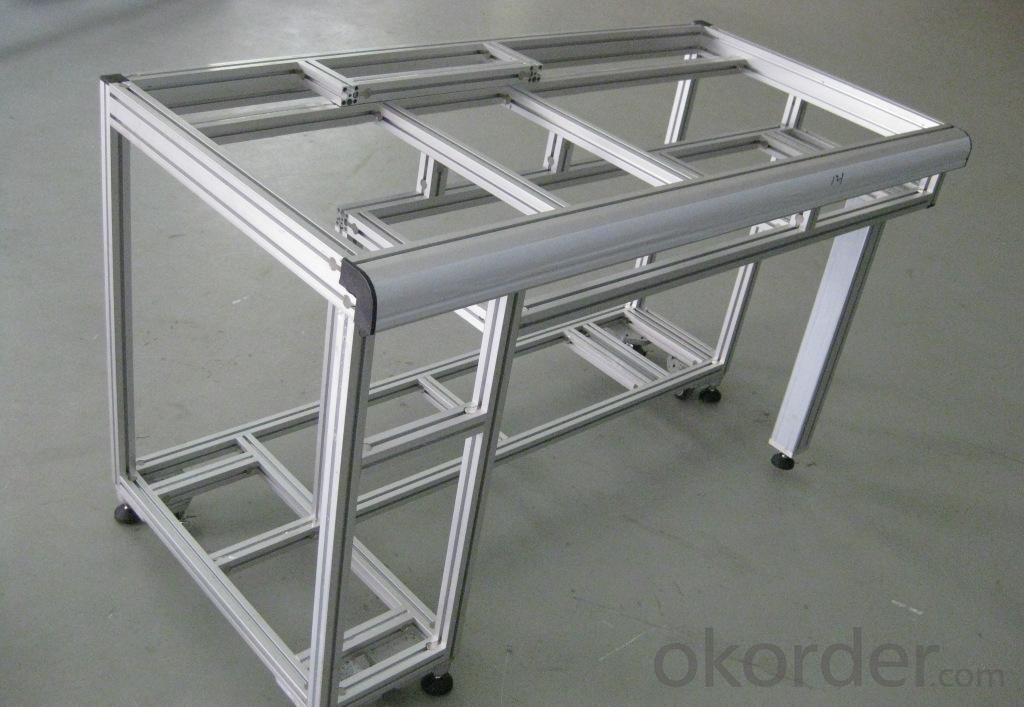
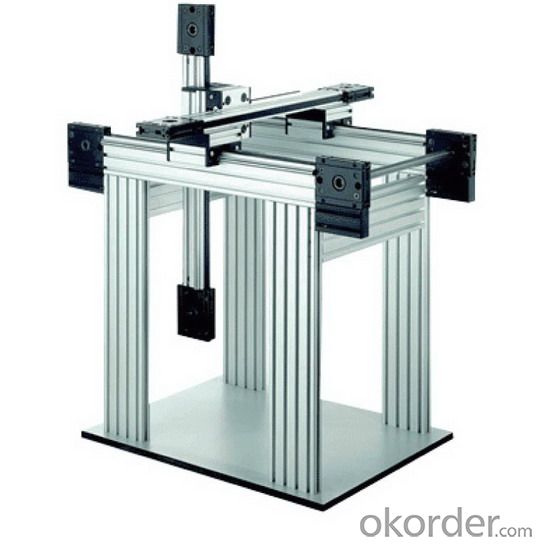
4.Anodized Golden Aluminium Profiles Specification:
1. Material: 6063,6061,6060,6005,6005A,etc.
2. Temper: T5 or T6
3. Finish: Mill finish, anodizing, powder coating, electrophoresis, wooden transfer or pvdf/carbon-flouride coated, polishing, brushing, sand blasting
4. Various colors: Silver, bronze, black, gold, blue, grey, champagne, bright, etc.
5. Machining: Cutting, punching, drilling, tapping, milling, bending, welding, CNC etc.
5.FAQ:
①How about your company?
A world class manufacturer & supplier of castings forging in carbon steel and alloy steel,is one of the large-scale professional investment casting production bases in China, consisting of both casting foundry forging and machining factory. Annually more than 8000 tons Precision casting and forging parts are exported to markets in Europe, America and Japan. OEM casting and forging service available according to customer’s requirements.
②How to guarantee the quality of the products?
We have established the international advanced quality management system,every link from raw material to final product we have strict quality test;We resolutely put an end to unqualified products flowing into the market. At the same time, we will provide necessary follow-up service assurance.
- Q: What is the tensile strength of aluminum sheets?
- The tensile strength of aluminum sheets can vary depending on the specific alloy and temper, but generally ranges from 20,000 to 45,000 pounds per square inch (psi).
- Q: Can aluminum sheets be anodized in different colors?
- Yes, aluminum sheets can be anodized in different colors. Anodizing is an electrochemical process that enhances the natural oxide layer on the surface of aluminum. By immersing the aluminum sheet in an electrolyte bath and applying an electric current, a controlled oxidation process occurs, resulting in a thick and durable layer of oxide on the surface. During the anodizing process, various dyes can be added to the electrolyte bath, allowing the aluminum to absorb the dye molecules and create a colored oxide layer. This allows for a wide range of colors to be achieved, including red, blue, green, yellow, and many others. Additionally, the intensity and shade of the color can be controlled by adjusting factors such as the concentration of the dye and the voltage applied during the anodizing process. The anodized layer formed on the aluminum sheet not only provides a vibrant and aesthetically pleasing appearance but also improves its corrosion resistance and durability. This makes anodized aluminum sheets an excellent choice for architectural, decorative, and industrial applications where color customization is desired while maintaining the inherent benefits of aluminum.
- Q: What is the electrical resistivity of aluminum sheets?
- The electrical resistivity of aluminum sheets typically ranges from 2.65 to 2.82 micro-ohm centimeters. However, it is important to note that the exact resistivity can vary depending on the specific alloy composition, thickness, temperature, and other factors.
- Q: Can aluminum sheets be used for balcony railings?
- Yes, aluminum sheets can be used for balcony railings. Aluminum is a lightweight and durable material that is commonly used for this purpose due to its resistance to rust and corrosion. Additionally, aluminum can be easily shaped and customized to meet specific design requirements, making it a popular choice for balcony railings.
- Q: which has more volume? a kg of gold or a kg of aluminum? please explain in physics terms
- Aluminum The density of Aluminum is pretty low. Gold has a very high density, almost twice as dense as iron. Density = mass / volume
- Q: Aluminum alloy cable tray is made of a series of aluminum sheets, a series of pure aluminum aluminum plate can do?
- Do you fold it with aluminium plate? It should be about the same. The cold rolled aluminum of the 1 series is still a little bit stronger,I understand the shape of the material, and if the aluminum extrusion molding, direct use of 6063 is the most appropriate.
- Q: I need help with this question for a report i'm doing, it's about recycling aluminium, please could you give me some reasons why to recycle aluminium and eg.saves energy, and how it does eg. saves energy by...Thanks a lot this will help me loads.P.S this is just a report for my science project.
- Aluminum has to be extracted from the earth which is costly and takes a lot of energy. Then the aluminum needs to be smelted out of the rock that it is in, again this takes a lot of energy and creates toxins. Aluminum like all metals are finite, we conserve resources and the land where they will need to be extracted by recycling it.
- Q: This question asks for a comparison between aluminum sheets and other lightweight materials like plastic and glass, focusing on their properties and uses.
- <p>Aluminum sheets are lightweight yet strong, offering excellent strength-to-weight ratios. They are more durable and heat resistant compared to plastics, which can deform under heat and are less sturdy. Unlike glass, aluminum is less brittle and does not shatter, making it safer for certain applications. Additionally, aluminum is recyclable and has good thermal and electrical conductivity, which is not the case with plastics. However, plastics are generally cheaper and easier to shape into complex forms, while glass offers better transparency for applications requiring clear visibility. Each material has its advantages depending on the specific requirements of the application.</p>
- Q: 6061-T6 can aluminum sheets be bent?
- You ask if the two batch of aluminum material has been aging, the hardness of the aluminum after aging is higher than before the aging. Another aluminum material from the extrusion after the storage time and environment also related. You can measure the hardness of the two batch of aluminum.
- Q: How do you bend aluminum sheets?
- In order to bend aluminum sheets, one must have a few tools and employ the correct technique. Here is a step-by-step manual on how to bend aluminum sheets: 1. Acquire the necessary tools: You will require a metal brake, which is a specialized tool intended for bending metal sheets, as well as a straight edge such as a ruler or a piece of wood. 2. Measure and indicate the bending line: Determine the desired location for the bend on the aluminum sheet and employ a measuring tape to mark the line. Ensure that the line is straight and precise. 3. Position the aluminum sheet: Place the aluminum sheet onto the metal brake, aligning the marked bending line with the brake's edge. Ensure that the sheet is secure and will not shift during the bending process. 4. Adjust the metal brake: Depending on the thickness of the aluminum sheet, modify the metal brake to the appropriate bending angle. This can typically be accomplished by loosening or tightening the clamps or screws on the brake. 5. Bend the aluminum sheet: Apply pressure to the metal brake, gradually bending the aluminum sheet along the marked bending line. Begin from one end and progress towards the other, ensuring a smooth and uniform bend. 6. Inspect the bend: Following the bending process, double-check the angle and alignment to confirm that it corresponds to your desired specifications. If necessary, make any necessary adjustments before proceeding. 7. Repeat if necessary: If you require multiple bends on the aluminum sheet, repeat the process for each one. Take your time and exercise patience in order to achieve the desired outcomes. It is important to note that the thickness and type of aluminum sheet may necessitate modifications to the bending technique. Thicker sheets may require increased pressure or multiple passes to achieve the desired bend. Always refer to the specific instructions and recommendations provided by the manufacturer of your metal brake for optimal results.
Send your message to us
Recycled Aluminum Sheets - Aluminium Profiles Aluminum Extrusion Profile
- Loading Port:
- Shanghai
- Payment Terms:
- TT OR LC
- Min Order Qty:
- 20 m.t.
- Supply Capability:
- 2000 m.t./month
OKorder Service Pledge
OKorder Financial Service
Similar products
Hot products
Hot Searches
Related keywords
